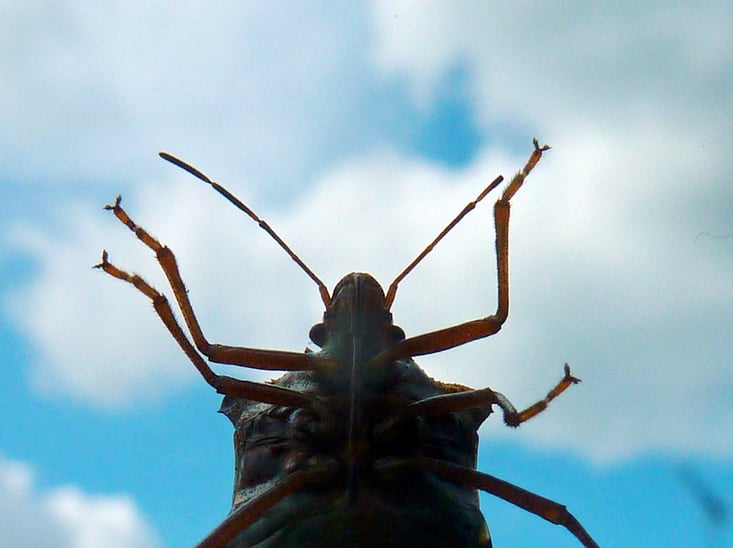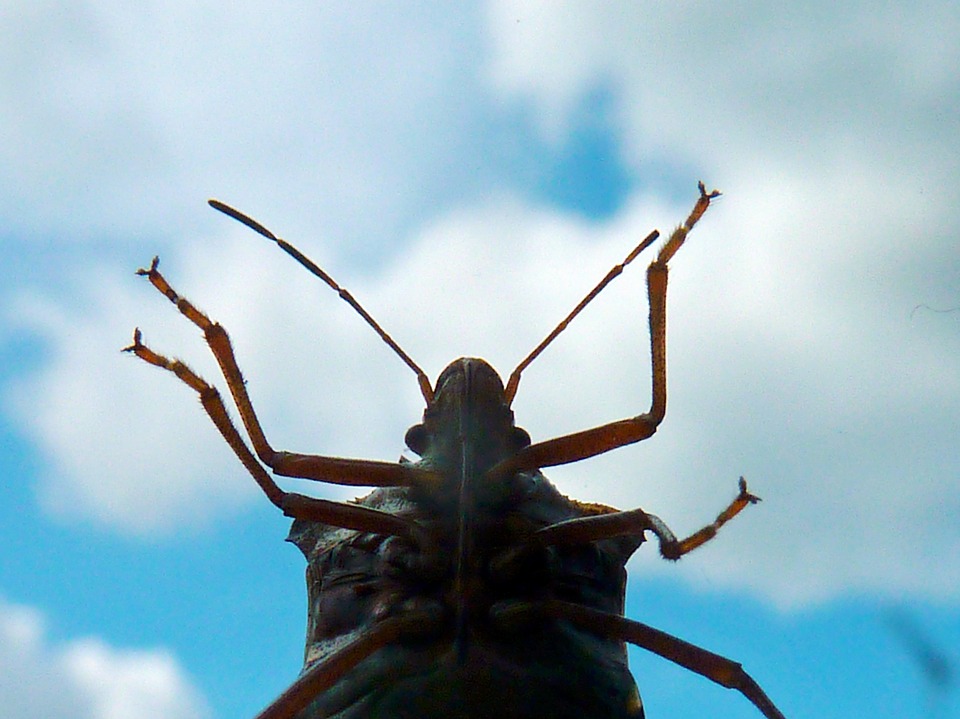
Hairy Chinch Bugs can cause extensive lawn damage and begin appearing in mid-July to mid-August. These infestations can cause small isolated patches of dead grass or in extreme cases require the entire lawn be renovated. As nymphs reach maturity in mid-July, they move into the lawn and begin feasting.
Chinch bugs suck the sap from the stems of turfgrass leaving circular shaped dead and sunken patches. Chinch bugs love hot dry weather and lawns in full sun are preferred. These little critters are small – only 4mm long and as adults are grey or brown in colour with a white band across their middles.
Diagnosing a Chinch Bug Problem
Cut the top and bottom off a metal can to create a cylinder and in the early morning sink it into the lawn on the outer edge of the damage. Fill it with water. Chinch bugs, if present, will float to the top of the water. Alternatively, cut a puck-sized sample from the lawn and sink it in a bucket of water and wait for the bugs to float to the top. You’ll want to repeat this test in several areas as the bugs can be localized in a small area of the lawn.
Signs
If your lawn has sustained similar damage in May, June, or in early July it’s likely not a chinch bug problem as the bugs begin to feed mid-July with damage appearing in August.
Is the damage isolated to the sunniest portions of your lawn (next to curbs or flower beds)? If the damage is also occurring in shadier parts of the lawn, then you don’t have a chinch bug problem.
Is the damage appearing in more less circular patches that expand? If the patches are irregular in shape, have a bullseye appearance, or stay the same size, this kind of damage is likely caused by another problem. If the damage is more like the former, then chinch bugs could be responsible.
Do you have a thatch problem? If you have more than 1/2in of thatch, chinch bugs could be setting up shop.
Does the dead grass pull out of the soil easily or does it resist? Chinch bug damaged grass will not pull out easily from the ground.
Other Causes of Lawn Damage
If these above conditions don’t point to chinch bugs, your lawn could be stressed due to other causes. The problems could be caused by furry pests, improper mowing practices, disease, or the heat and drought conditions often present in July when grass can go dormant.
Remedies
Chinch bugs thrive in drought-stressed grass, so keeping the affected areas as well as a good perimeter around the affected area well-watered can help. The internet offers a variety of other home remedies including using a shop-vac on the area, dishwashing soap with water, and insecticidal soap, but our experts can’t verify or recommend these home remedies as some of these will cause damage to the grass and the effect to the chinch bug population is difficult to verify.
Do you have brown or dead patches in your lawn and want to know what’s causing the problem? At Nutri-Lawn Burlington, we can help diagnose the problem and have the expertise to create a lawn you will be proud of.
Email Burlington@nutrilawn.com or call us at 1.905.632.2077.






